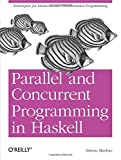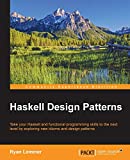In Haskell, a non-binary tree is typically implemented using a datatype representing a tree structure with an arbitrary number of child nodes. Unlike a binary tree where each node has at most two children, a non-binary tree can have any number of child nodes.
To implement a non-binary tree in Haskell, you can define a datatype that represents a tree node with a value and a list of child nodes. Each child node can itself be a tree node, allowing for the creation of a recursive tree structure.
Operations on a non-binary tree in Haskell would involve functions to create, insert, traverse, and manipulate the tree structure. Traversal functions such as depth-first search or breadth-first search can be implemented recursively to visit each node in the tree.
Overall, a non-binary tree in Haskell provides a flexible and efficient way to represent hierarchical data structures with multiple child nodes at each level.
What is the purpose of using a non-binary tree in Haskell?
There are several reasons to use non-binary trees in Haskell, including:
- Flexibility: Non-binary trees allow for a greater range of tree structures than binary trees, which can be useful in certain applications where a more complex hierarchy is needed.
- Efficiency: In some cases, a non-binary tree can provide more efficient access and search operations compared to a binary tree, depending on the specific requirements of the application.
- Expressiveness: Non-binary trees can be more expressive and intuitive for modeling certain types of data structures or relationships, allowing for a more natural representation of the problem domain.
- Algorithmic requirements: Some algorithms or data structures may inherently require the use of non-binary trees to efficiently solve a problem or handle a specific type of data.
Overall, using a non-binary tree in Haskell can provide greater flexibility and efficiency in certain situations, making it a valuable tool for developers working with complex data structures and algorithms.
What is the process of deleting a node from a non-binary tree in Haskell?
To delete a node from a non-binary tree in Haskell, you would typically write a function that recursively searches for the node to be deleted, removes it from the tree, and then reorganizes the tree as needed to maintain its structure. Here is a step-by-step process to delete a node from a non-binary tree in Haskell:
- Define a data type for the tree structure. For example, you can represent a non-binary tree using a data type like this:
1
|
data Tree a = Node a [Tree a]
|
- Write a function to delete a node from the tree. This function should take the value of the node to be deleted and the tree itself as input parameters. The function should recursively search for the node to be deleted, remove it from the tree, and reorganize the tree as needed.
- The function would look something like this:
1 2 3 4 5 |
deleteNode :: Eq a => a -> Tree a -> Tree a deleteNode _ (Node x []) = Node x [] -- If the tree is empty, return the empty tree deleteNode val (Node x xs) | x == val = Node x [] -- If the current node is the one to be deleted, return an empty node | otherwise = Node x (map (deleteNode val) xs) -- Recursively delete the node from the children of the current node |
- Create a sample non-binary tree and test the deleteNode function by calling it with the value of the node to be deleted. For example:
1 2 3 4 5 6 |
-- Example tree tree :: Tree Int tree = Node 1 [Node 2 [], Node 3 [Node 4 [], Node 5 []]] -- Delete node 4 from the tree newTree = deleteNode 4 tree |
This is a basic outline of the process of deleting a node from a non-binary tree in Haskell. Depending on the specific structure and requirements of your tree, you may need to modify the function implementation accordingly.
What is the size of a non-binary tree in Haskell?
In Haskell, the size of a non-binary tree would depend on the specific implementation of the tree data structure. A non-binary tree can have any number of child nodes for each parent node, so the size of the tree would be the total number of nodes in the tree.
If you are using a custom tree data structure in Haskell, you would need to define a function to recursively traverse the tree and count the nodes to calculate the size of the tree.
For example, a function to calculate the size of a non-binary tree could look like this:
1 2 3 4 |
data Tree a = Node a [Tree a] treeSize :: Tree a -> Int treeSize (Node _ children) = 1 + sum (map treeSize children) |
This function defines a recursive traversal of the tree structure, counting each node as it traverses the tree. The size of the tree is calculated by adding 1 for the current node and recursively summing the sizes of all the child nodes.











